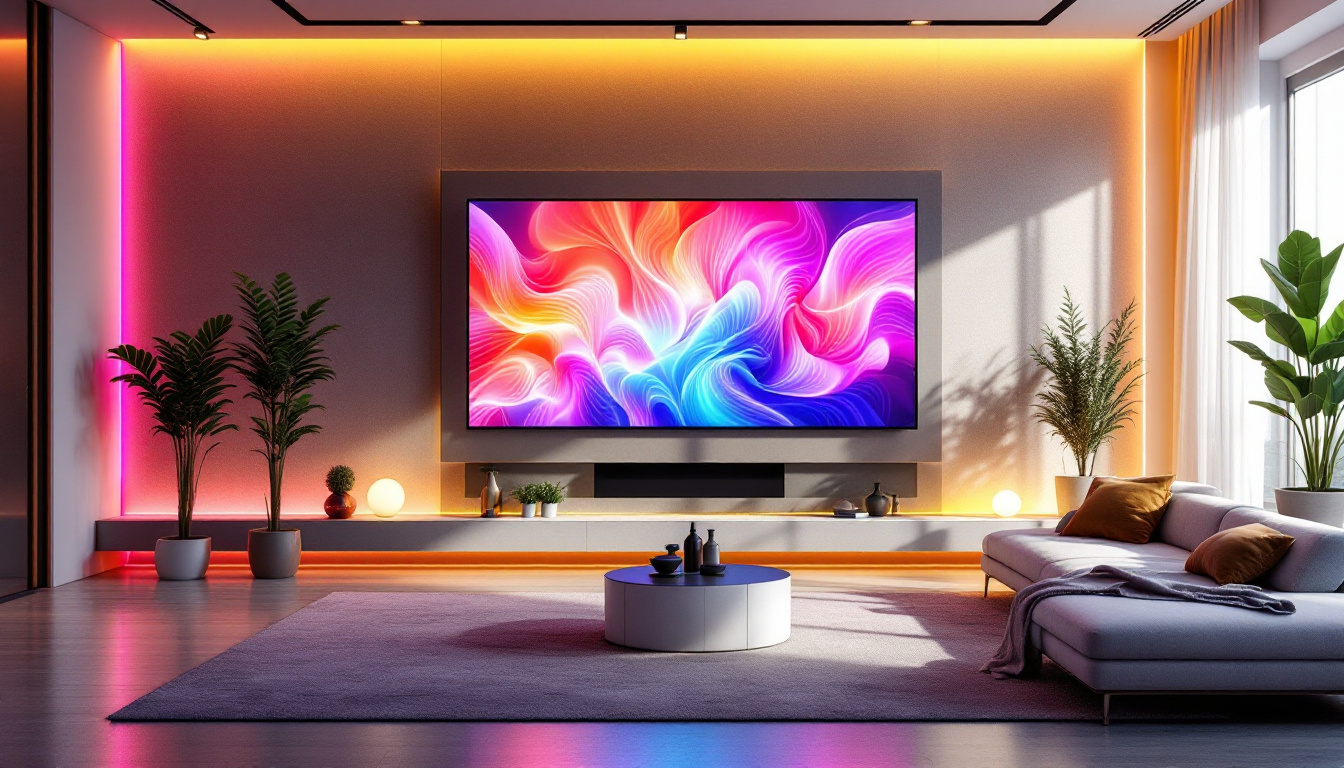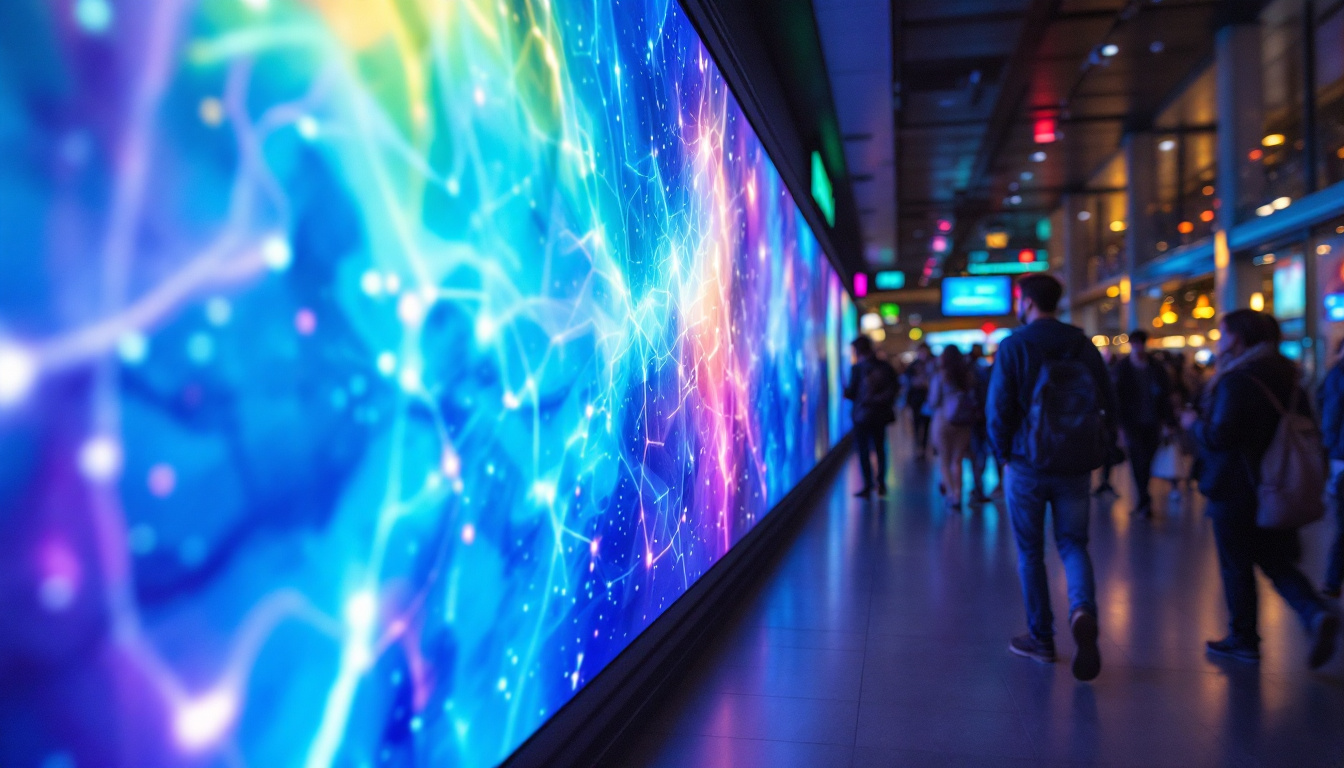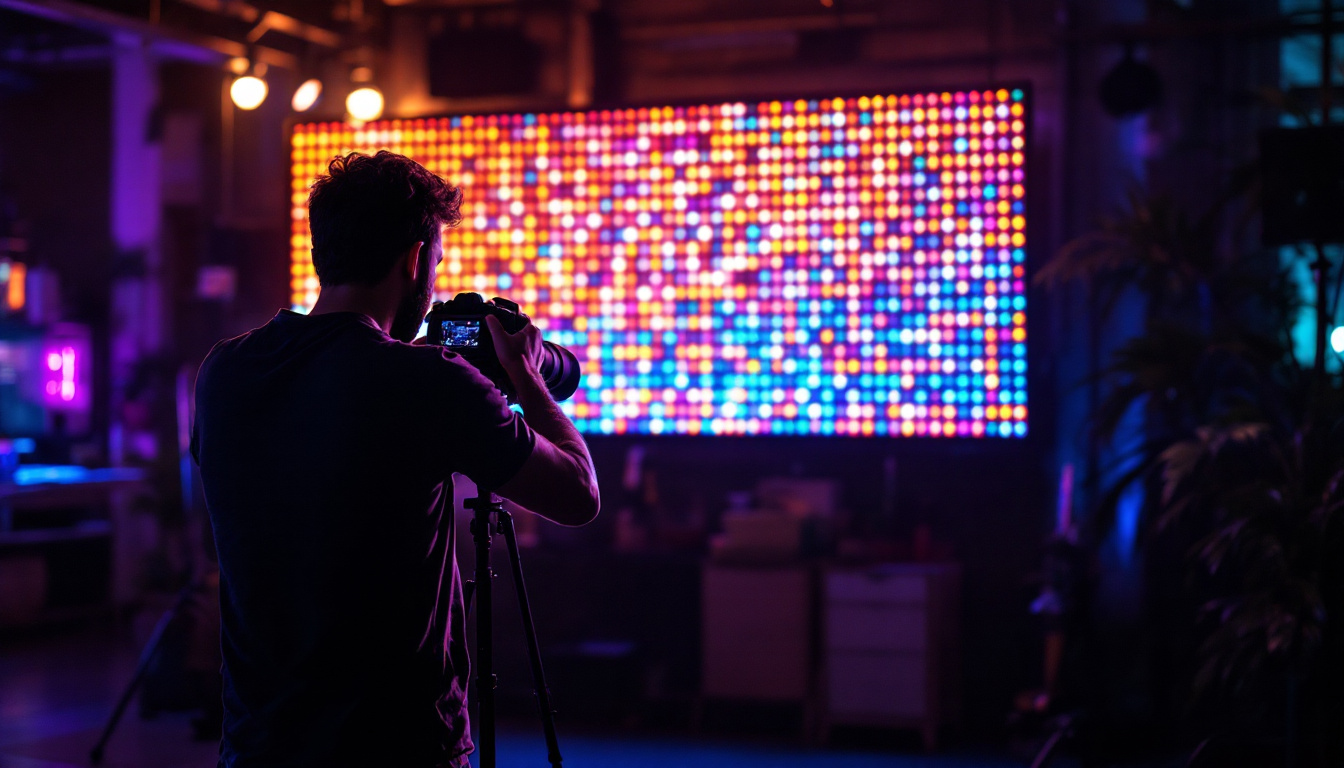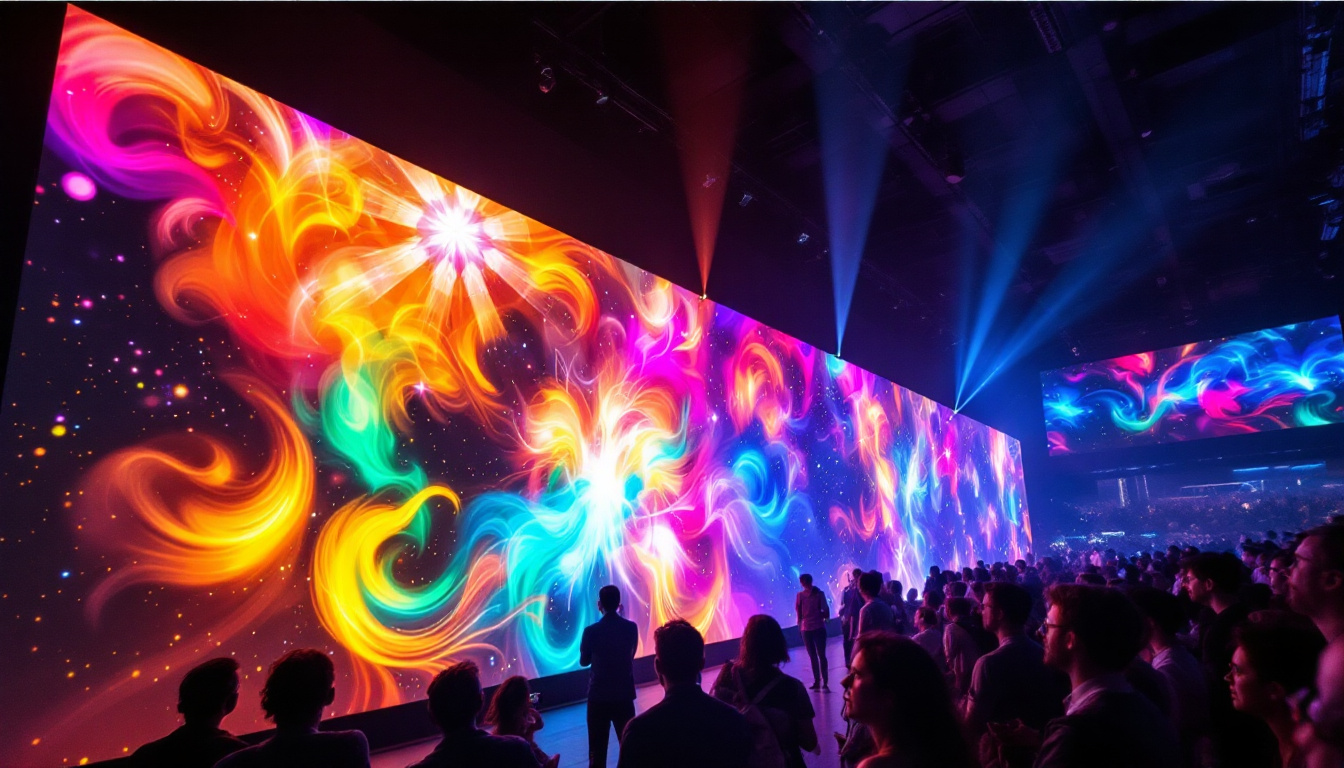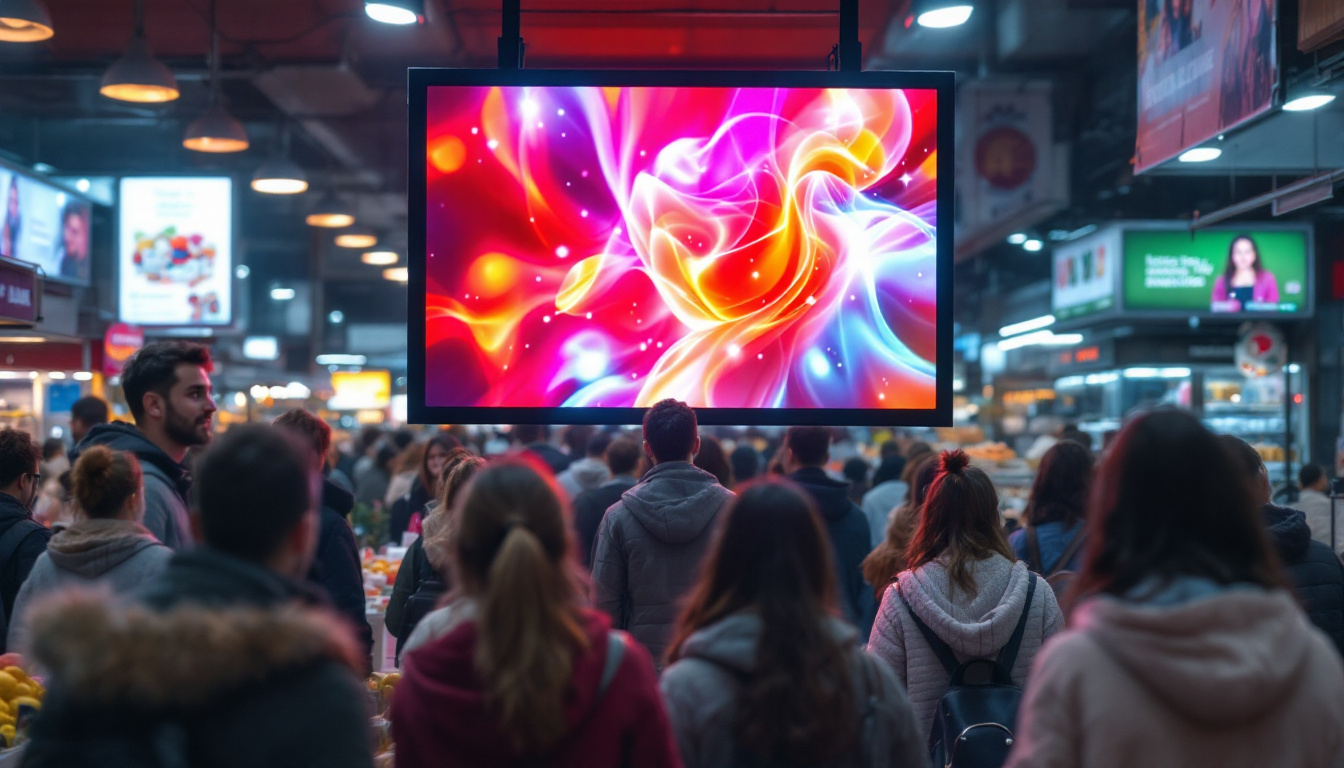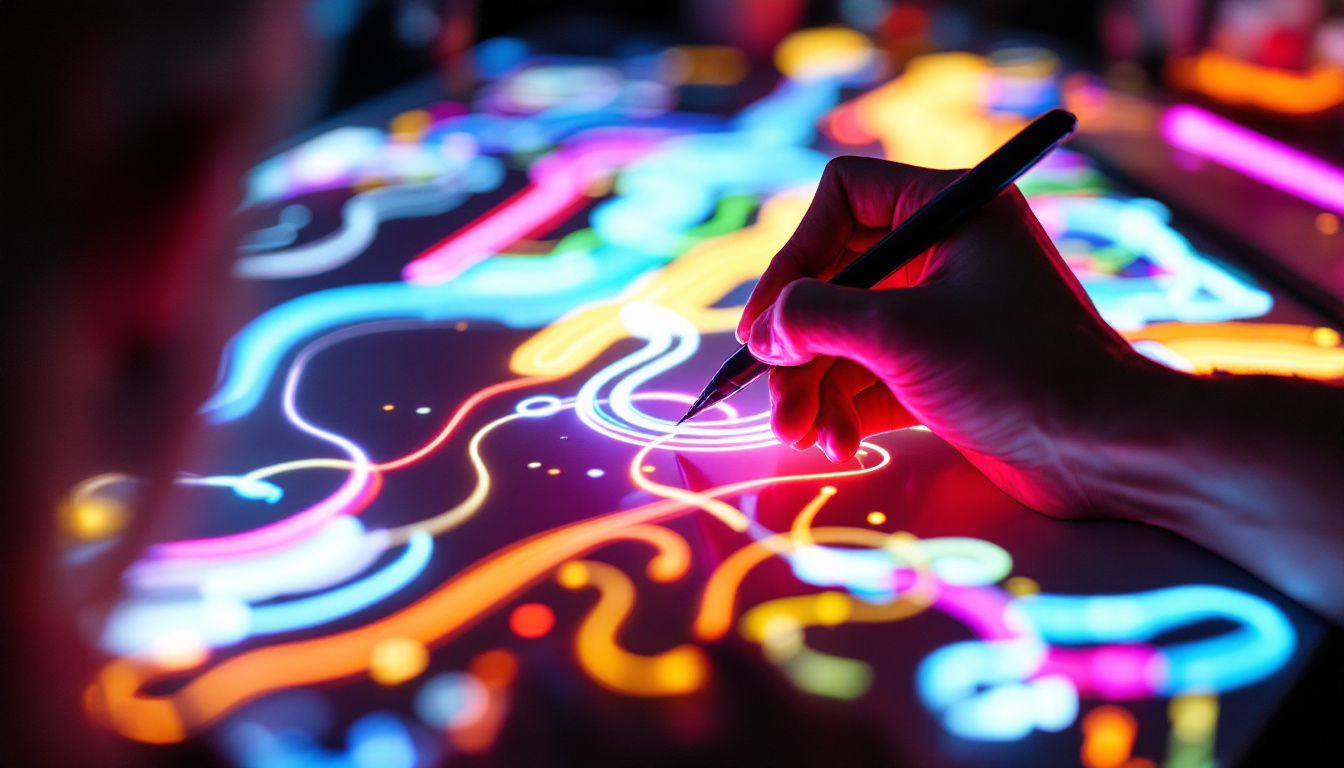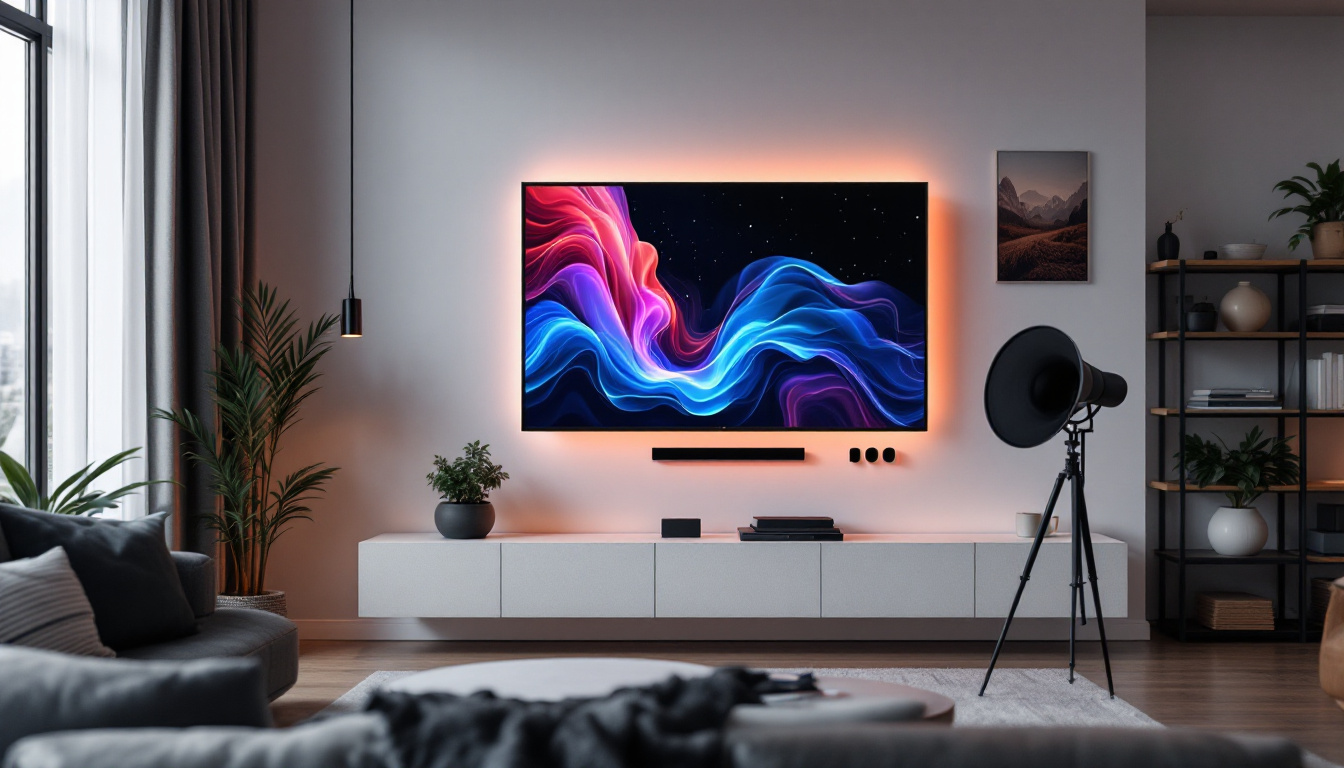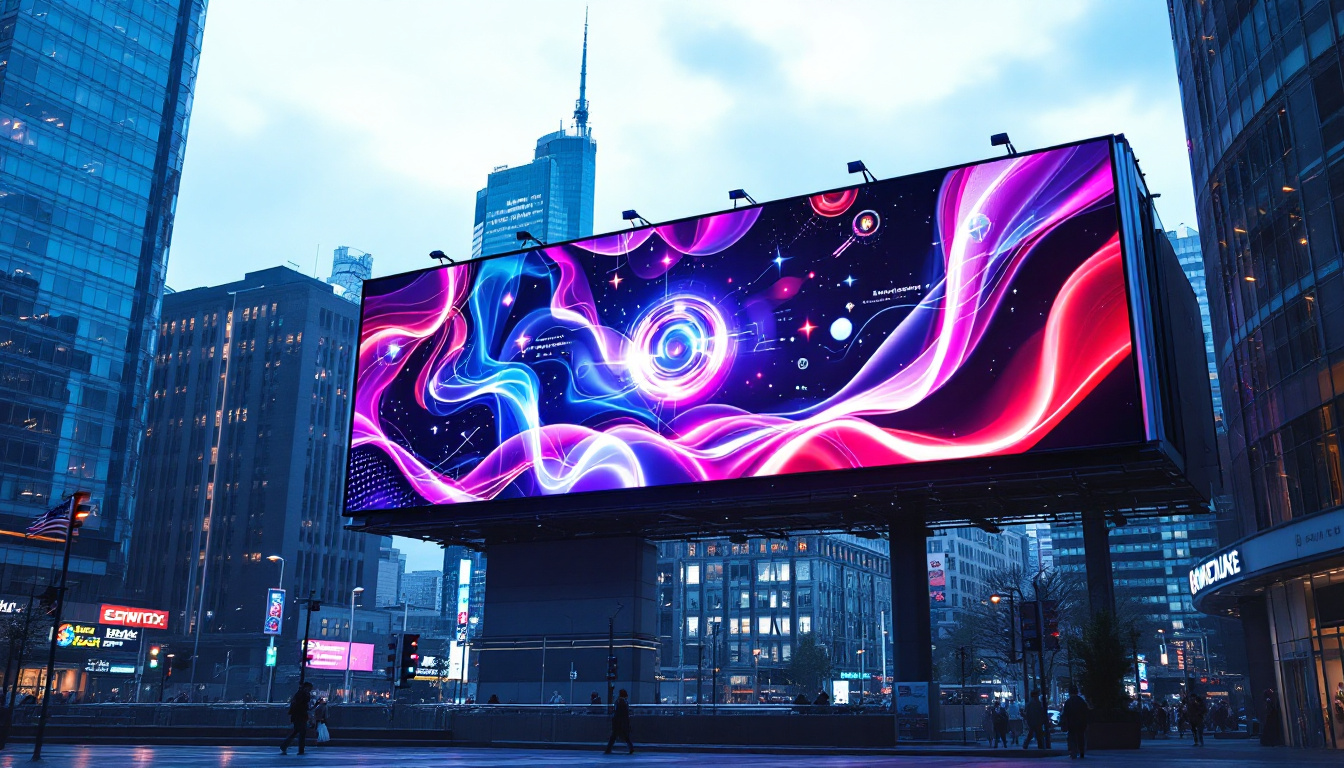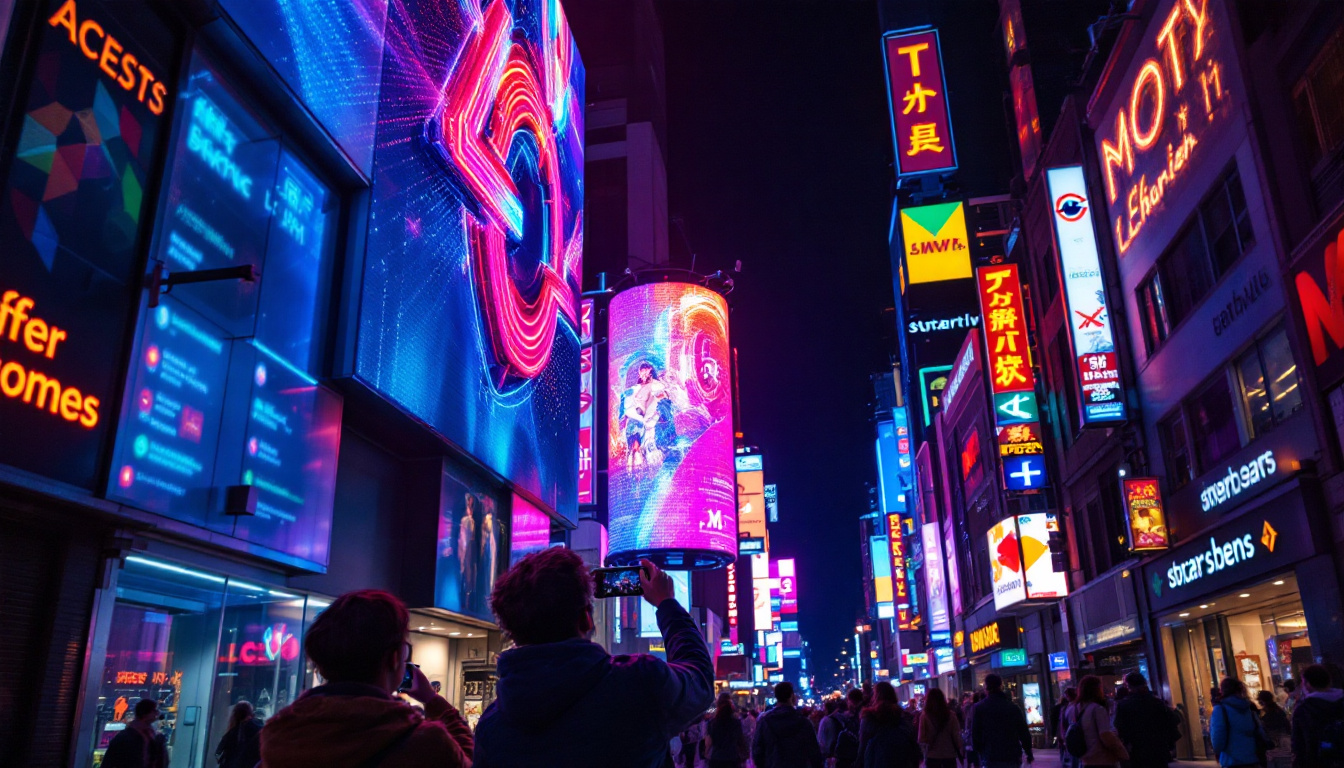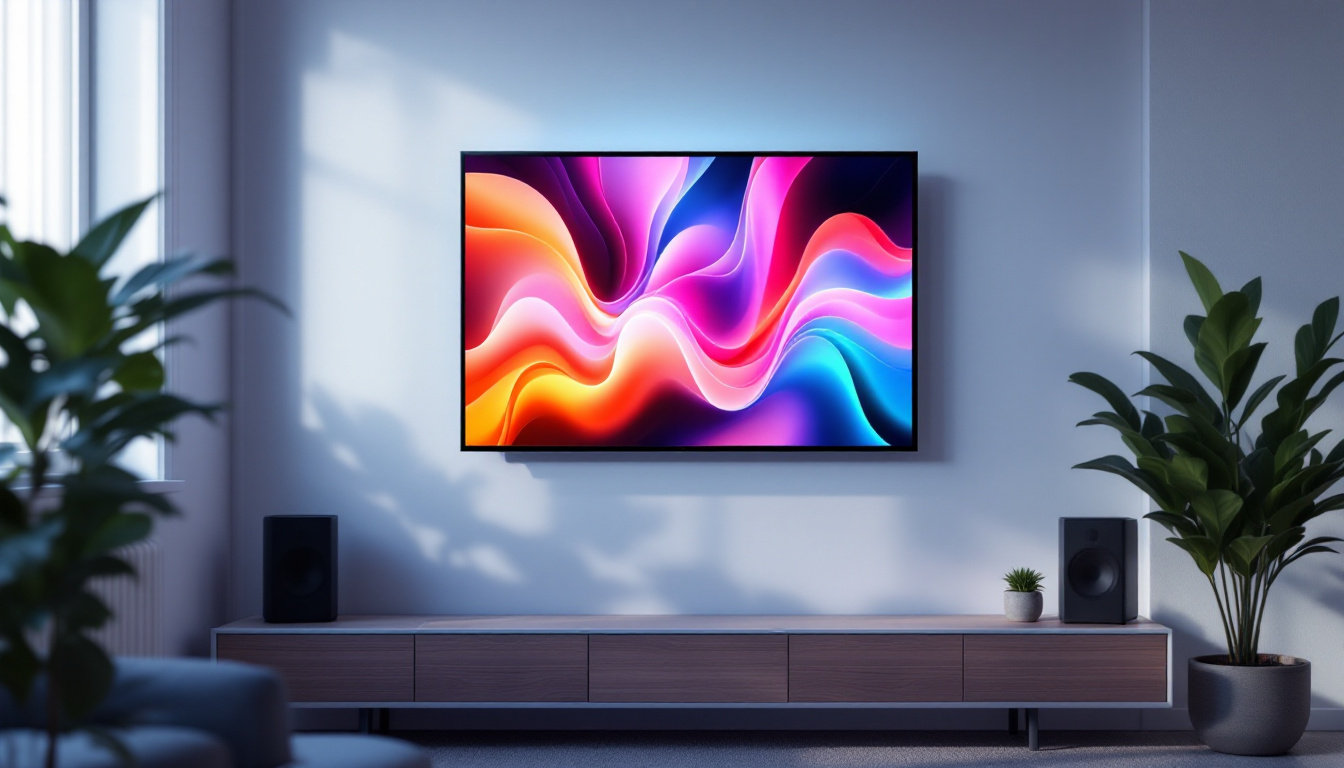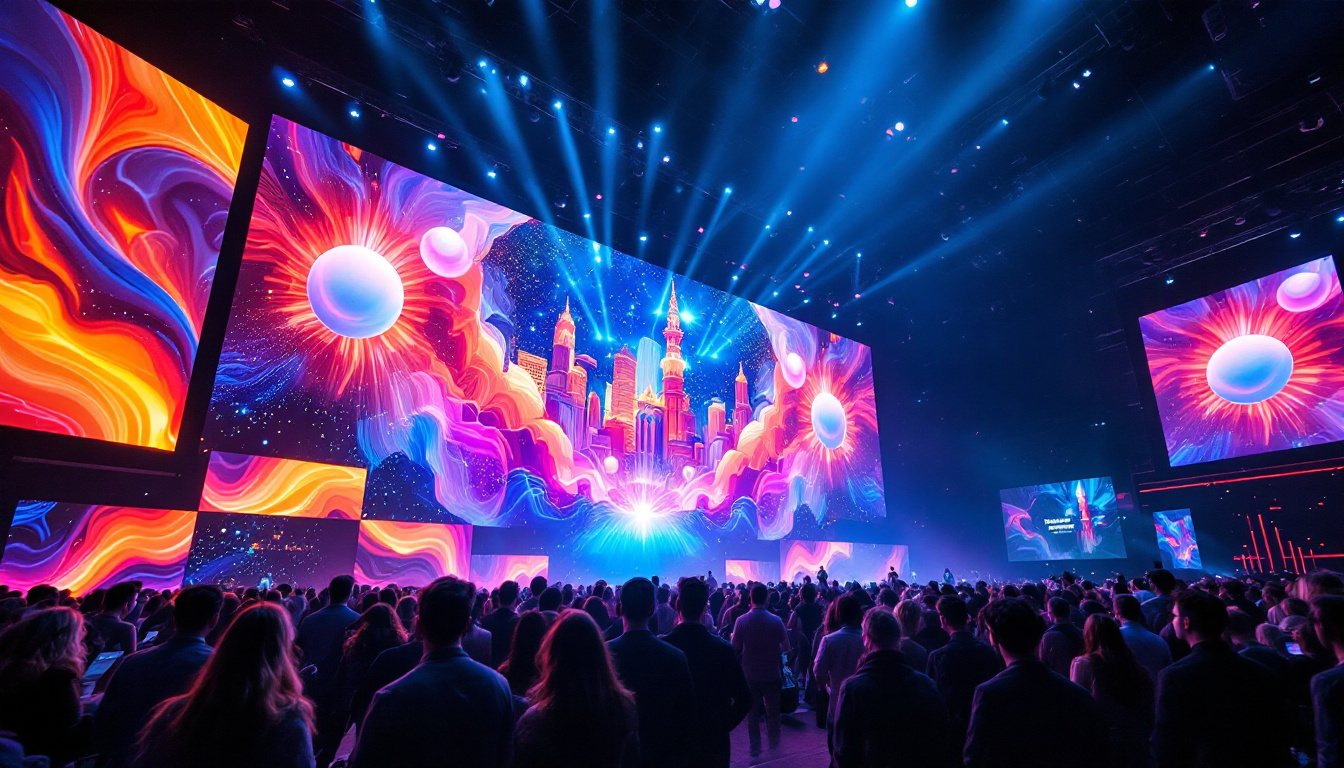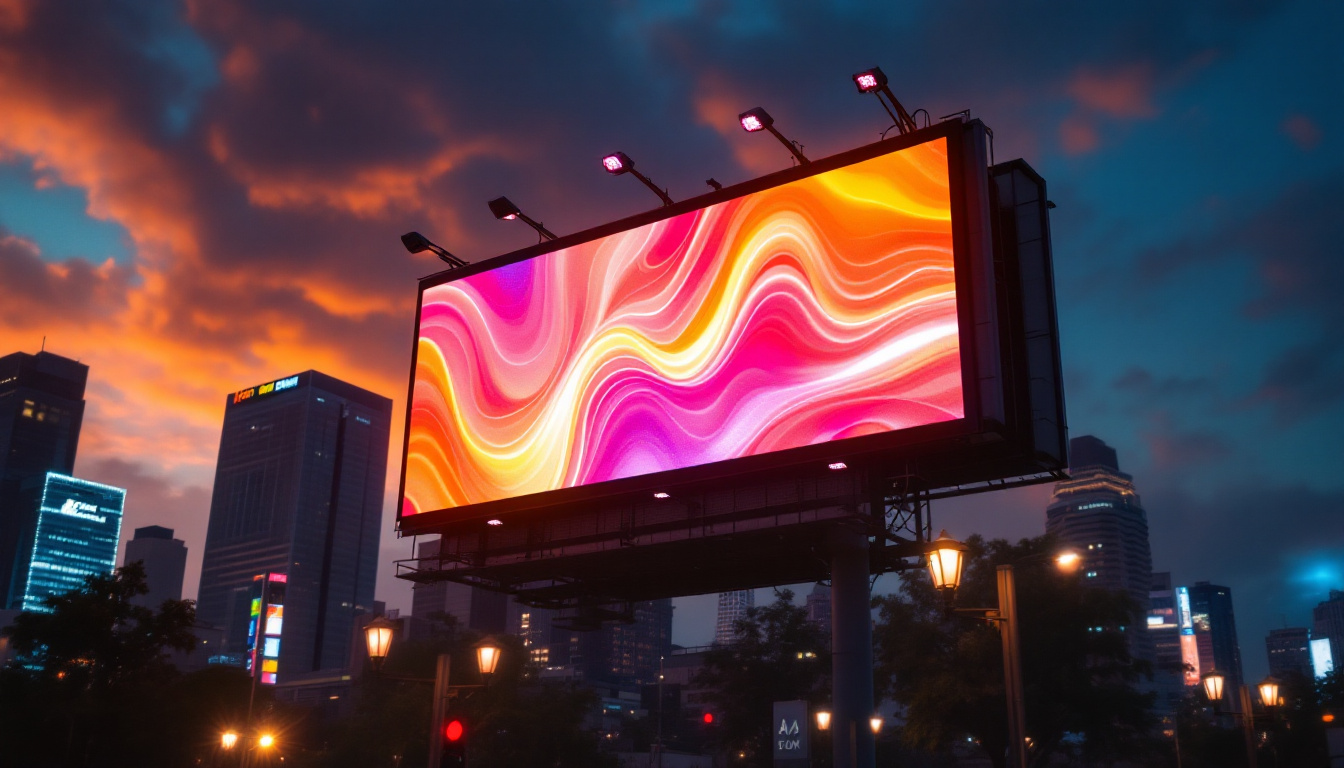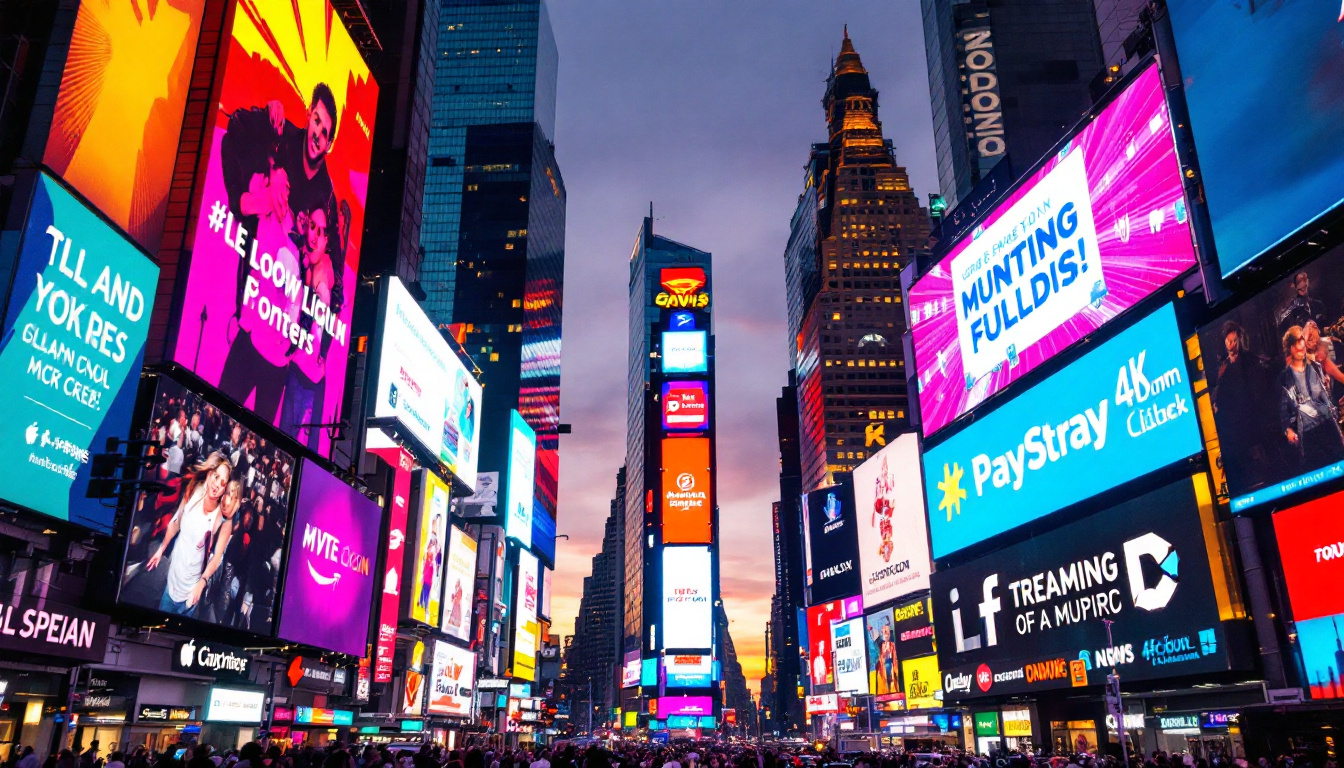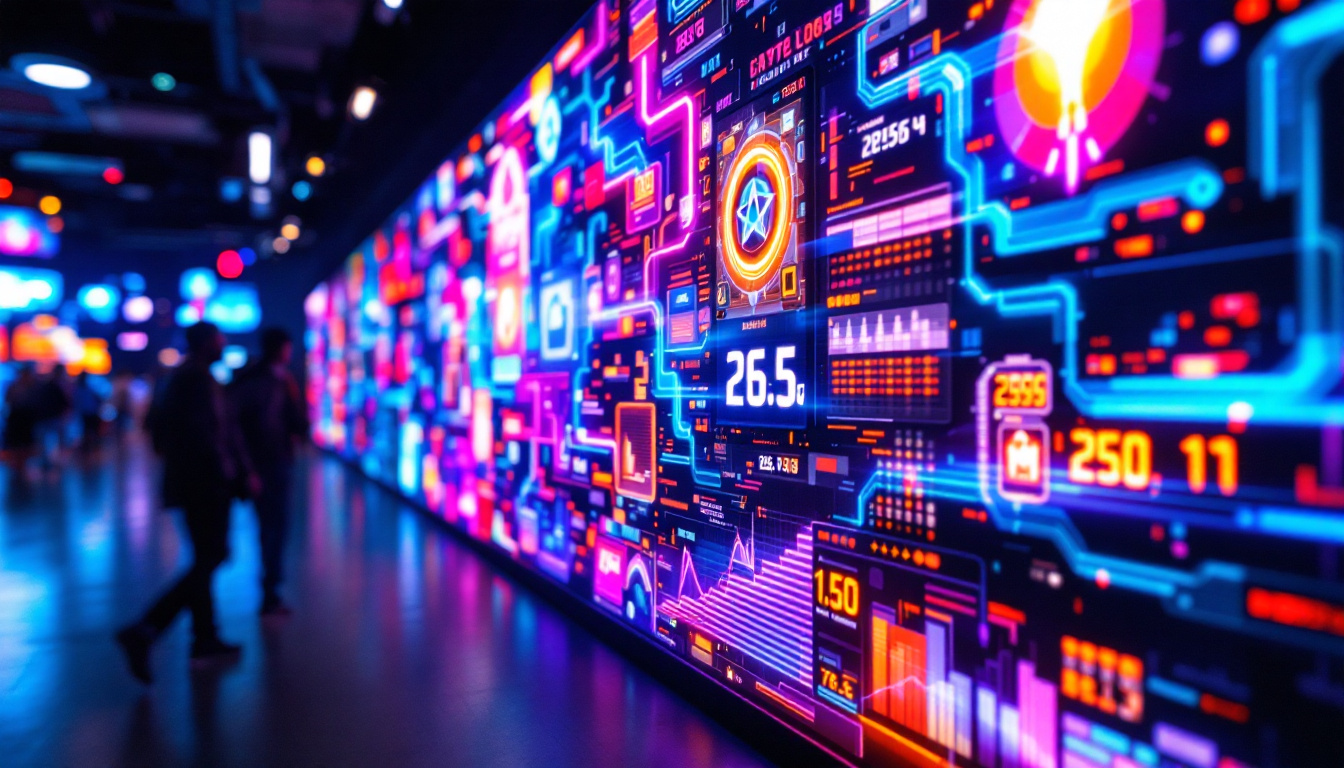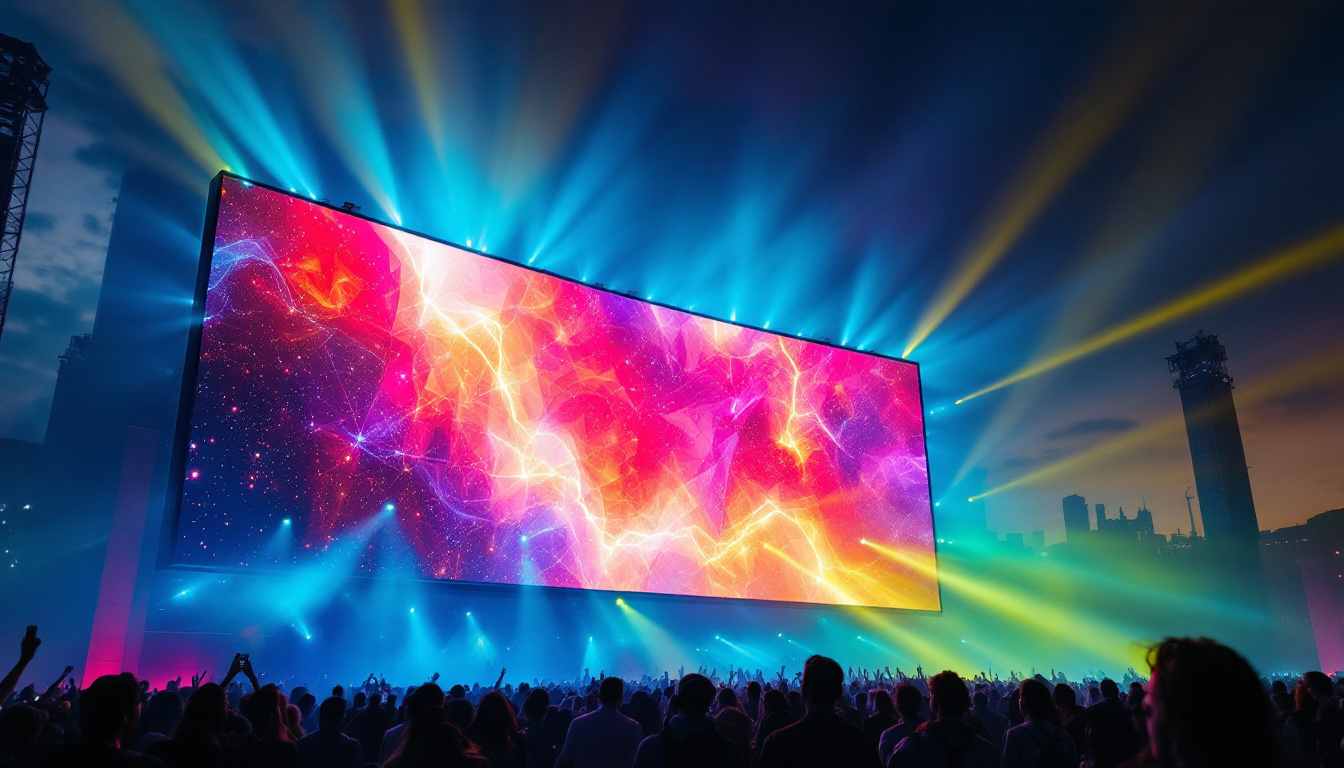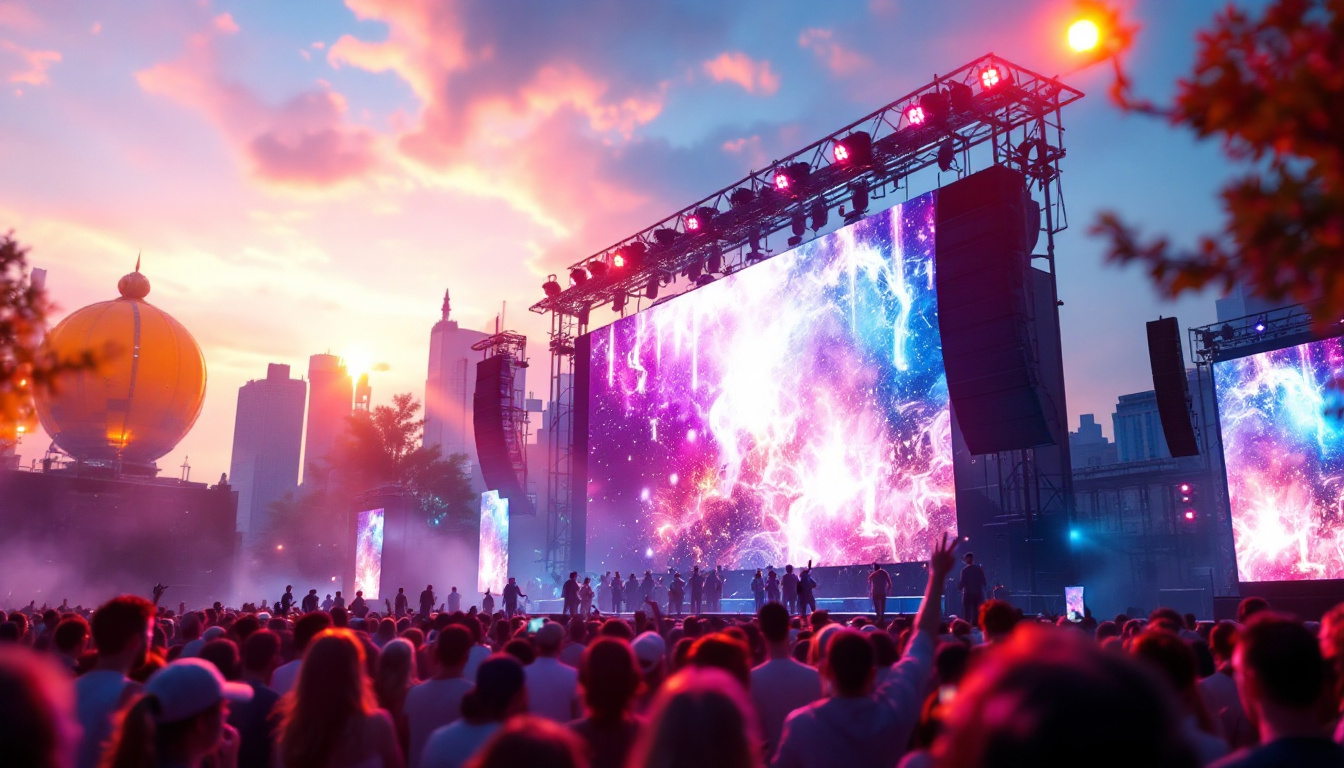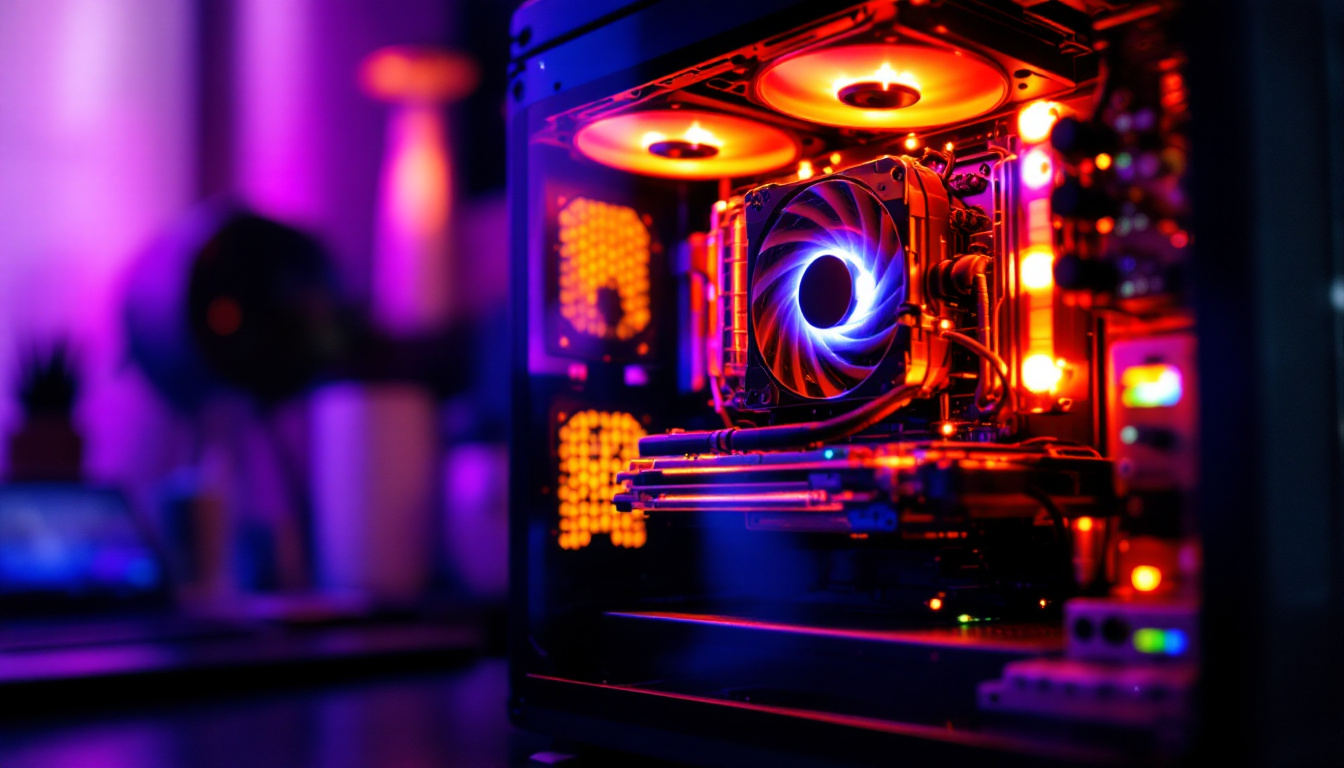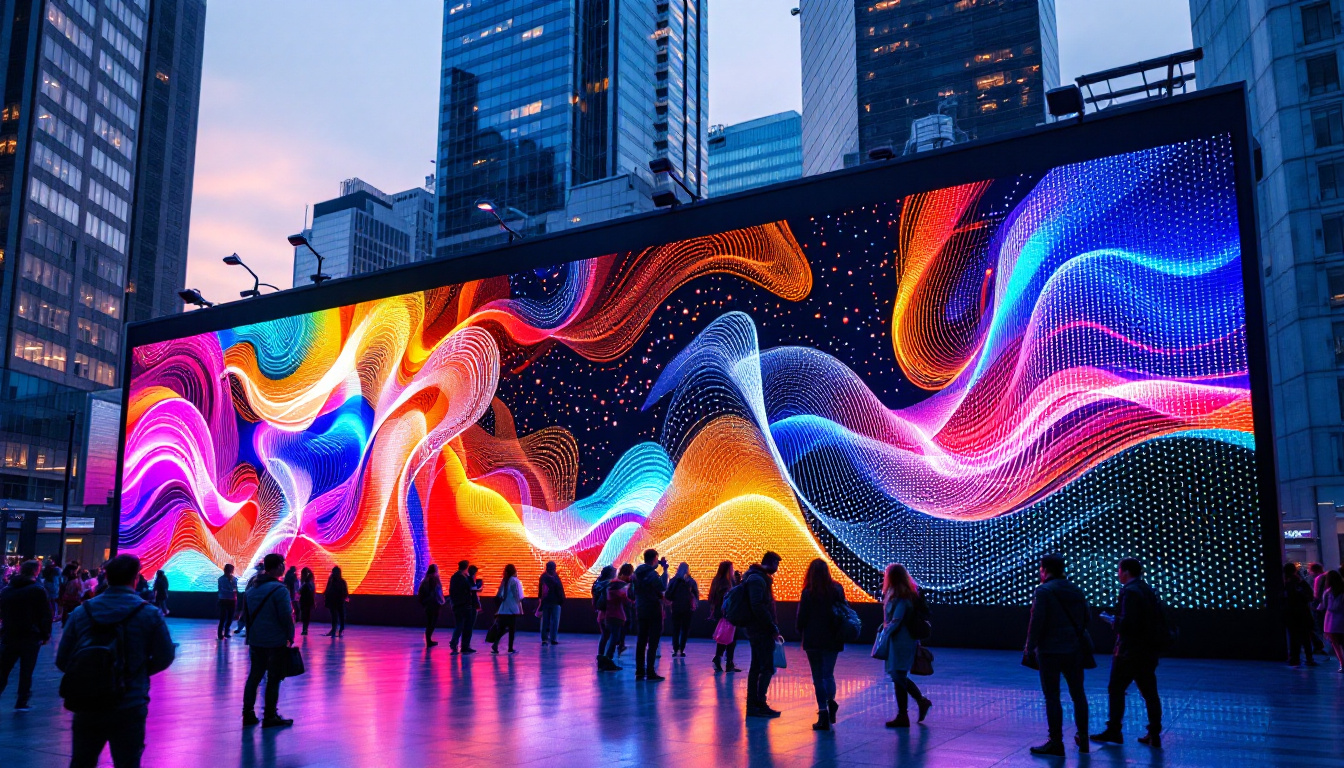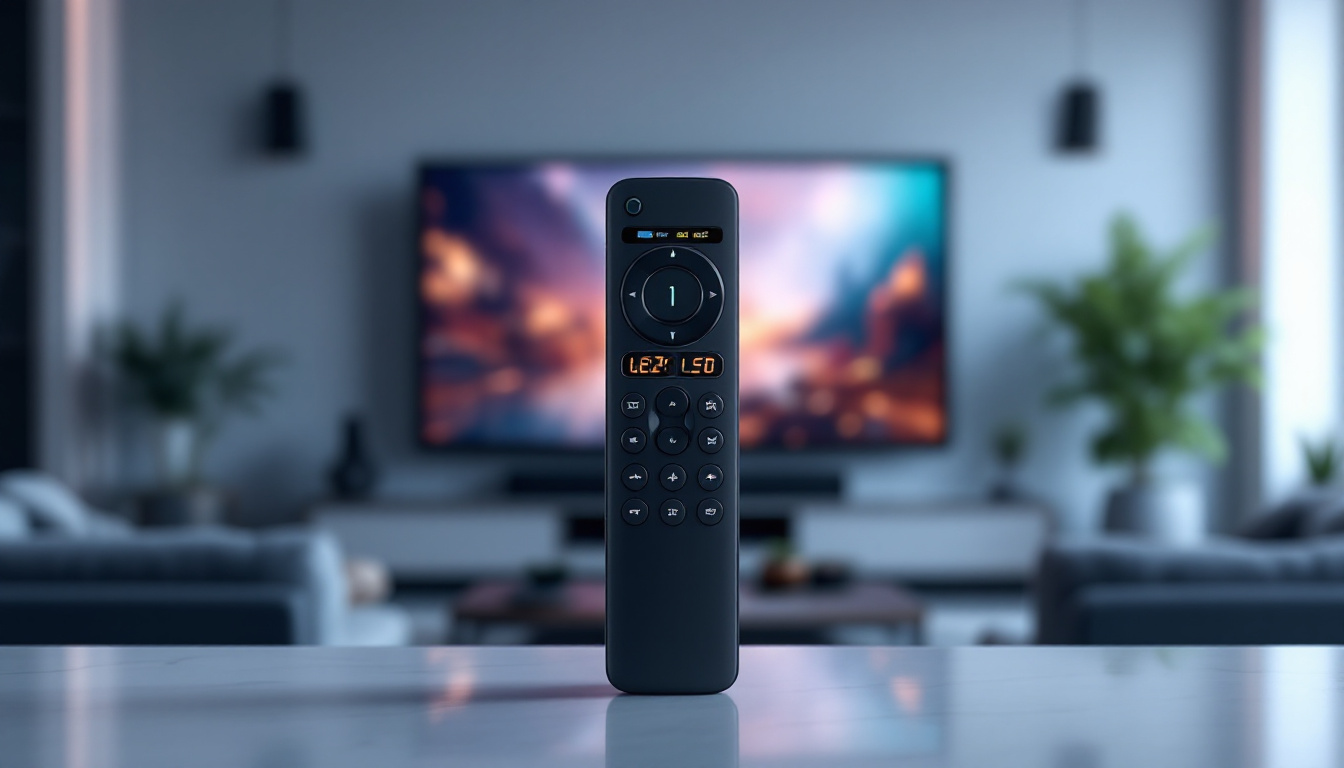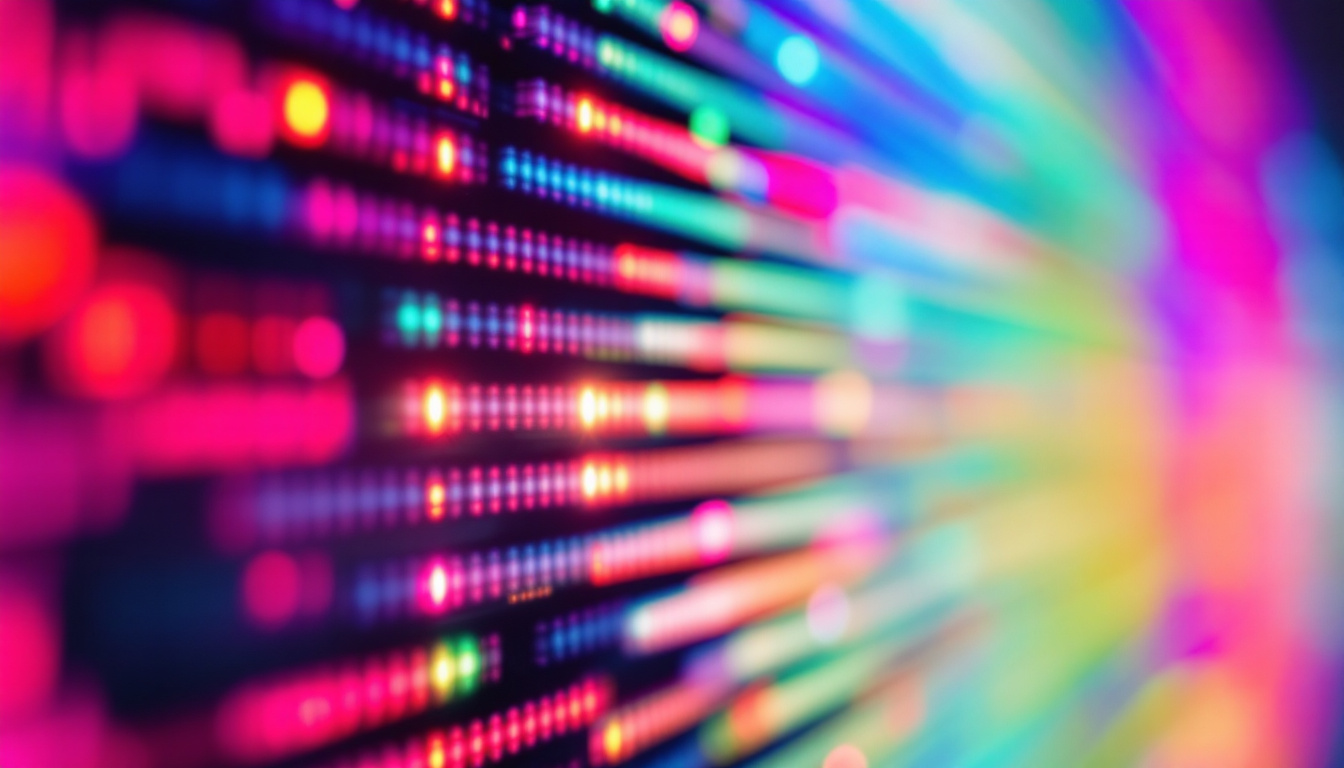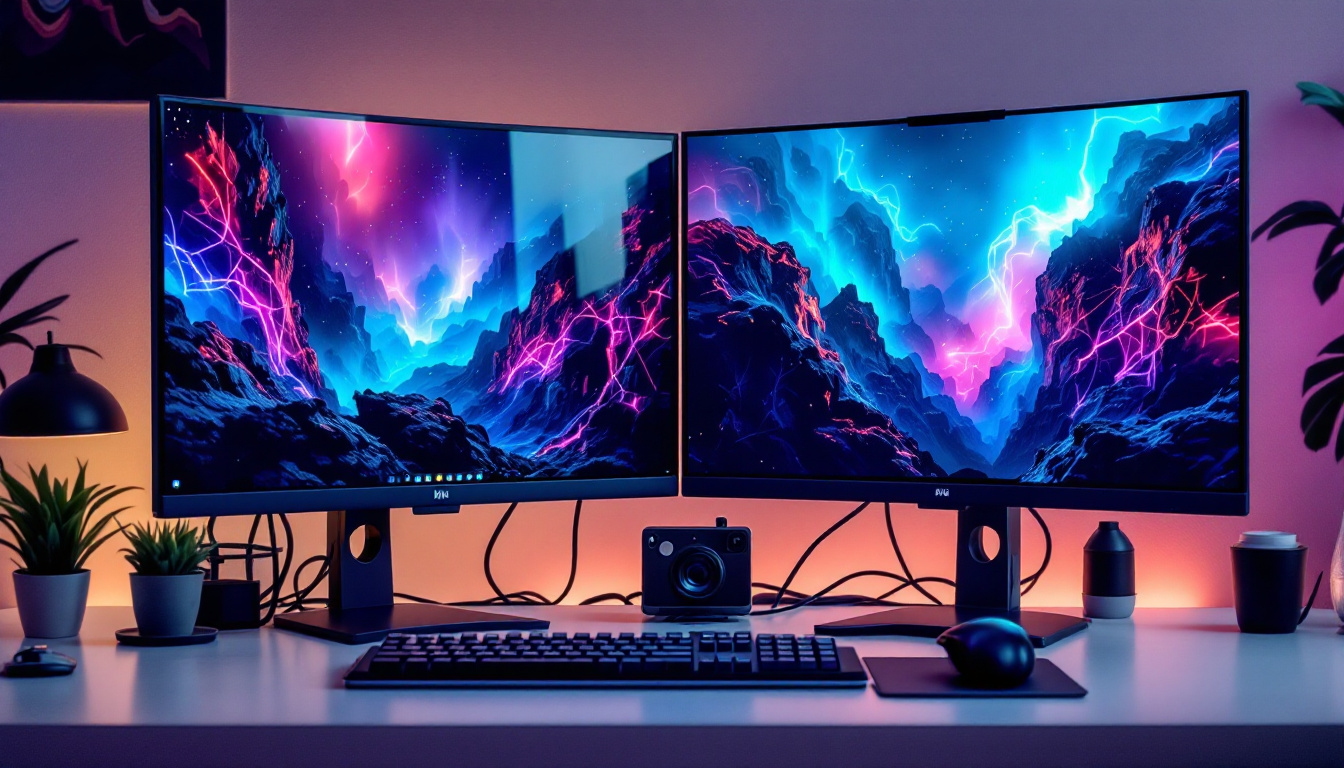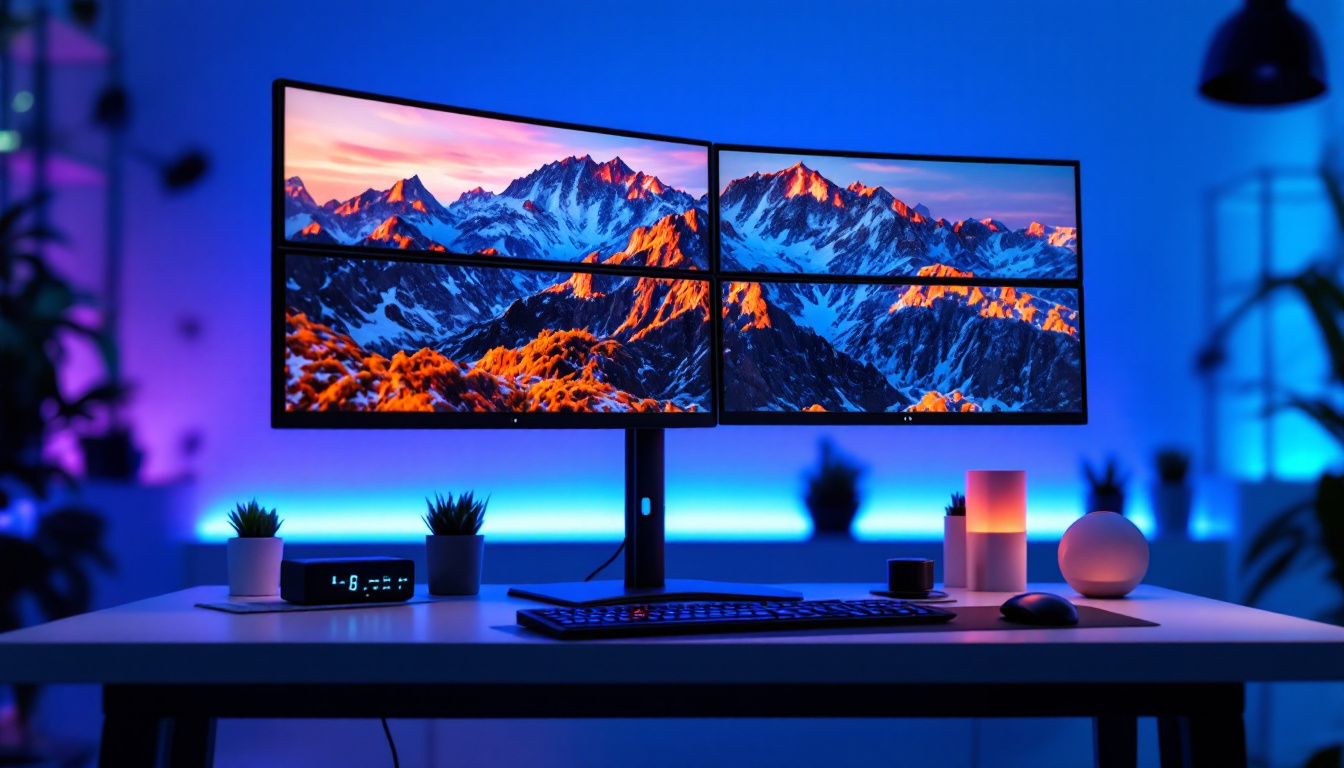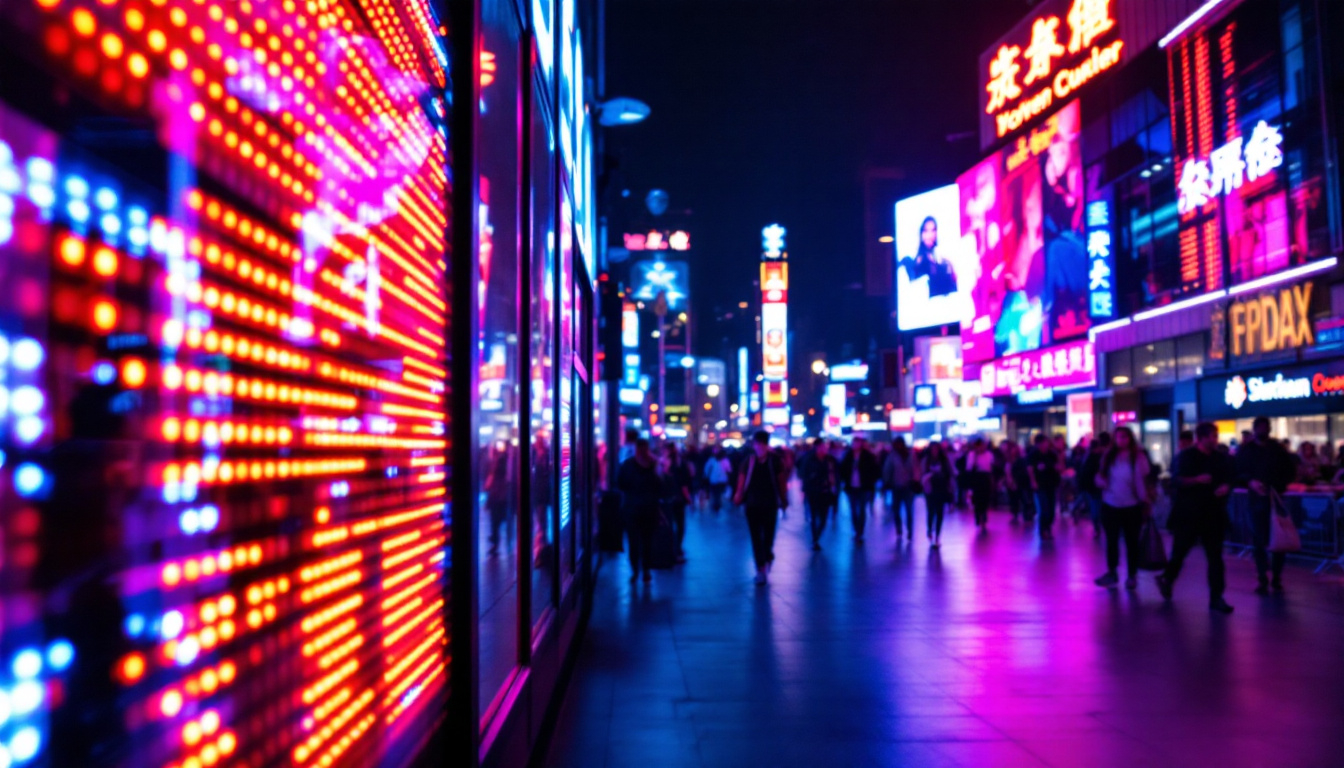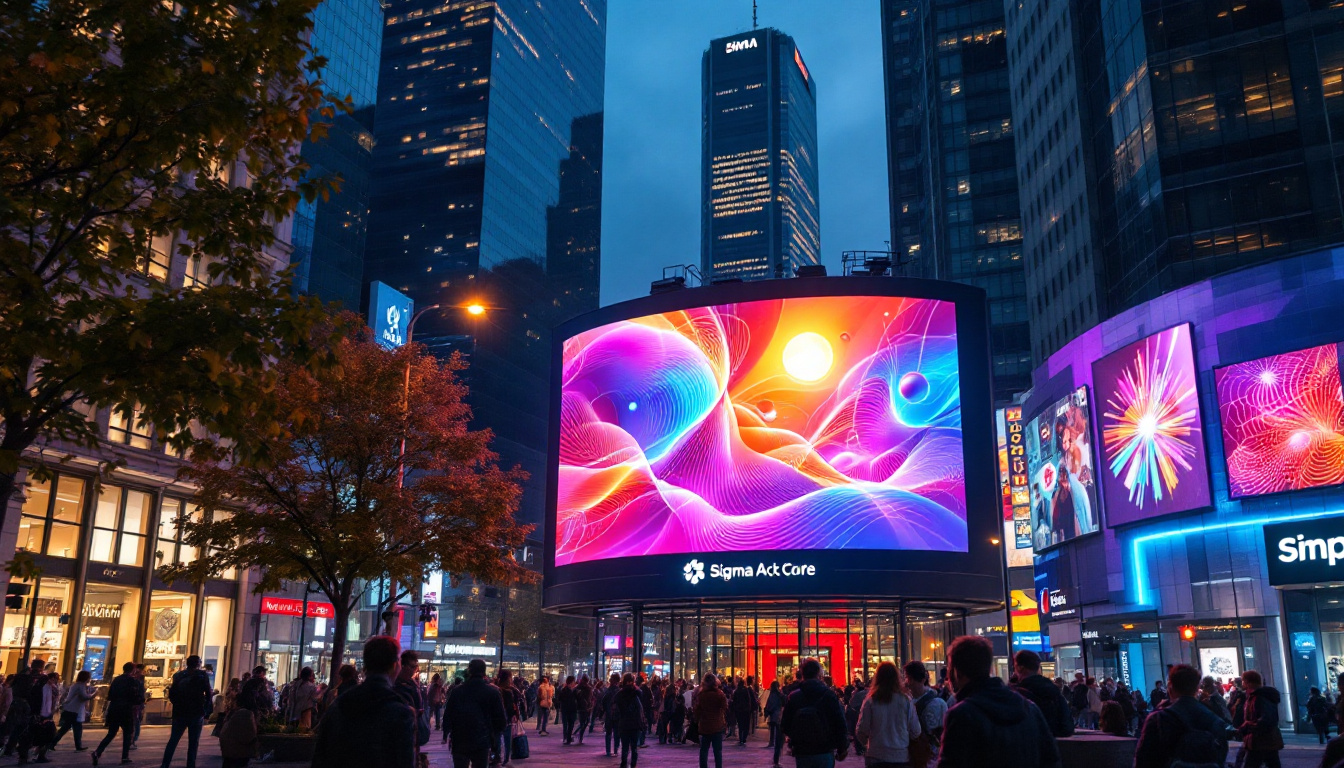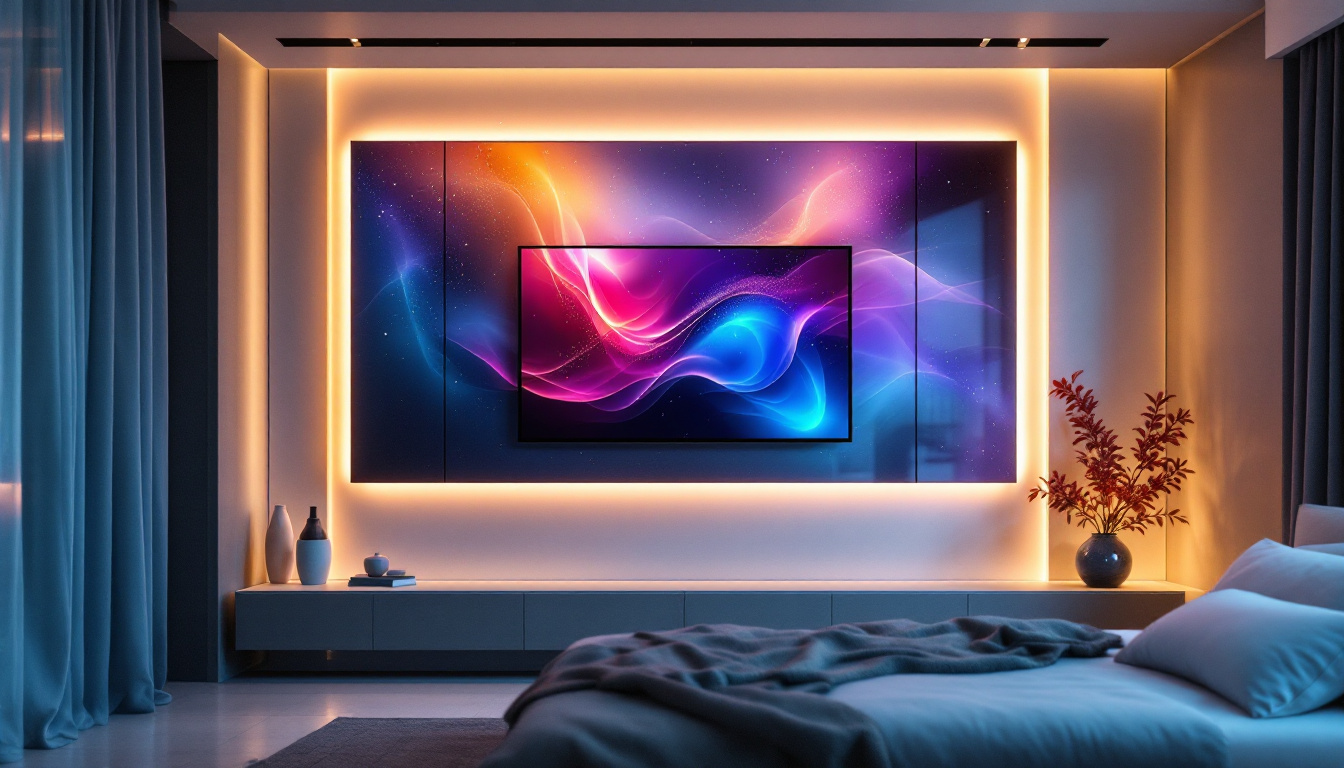In the modern era of interior design, the integration of technology into living spaces has become increasingly prevalent. One of the most innovative ways to enhance the aesthetic and functional appeal of a living hall is through the use of LED displays. These dynamic visual elements not only serve as focal points but also offer a range of practical applications. This article delves into the various aspects of LED displays in living hall wall design, exploring their benefits, design possibilities, and installation considerations.
The Rise of LED Displays in Interior Design
LED displays have revolutionized the way we interact with our environments. Once primarily used for advertising and outdoor signage, they have now found a significant place in residential settings. The versatility of LED technology allows for a plethora of design options that can cater to various tastes and preferences.
Benefits of LED Displays
One of the primary advantages of LED displays is their energy efficiency. Compared to traditional lighting and display technologies, LEDs consume significantly less power, making them an eco-friendly choice. This efficiency not only reduces energy bills but also contributes to a lower carbon footprint.
Moreover, LED displays offer exceptional brightness and clarity. This means that they can be effectively used in various lighting conditions, ensuring that the visuals remain vibrant and engaging. Whether it’s displaying art, videos, or even live feeds, the quality of an LED display is hard to match.
Versatility in Design
LED displays come in various shapes and sizes, allowing for creative freedom in design. From large wall-mounted screens to smaller, more intricate installations, the possibilities are endless. They can be seamlessly integrated into existing decor or serve as standalone features that draw attention.
Additionally, the ability to customize content displayed on LED screens adds another layer of versatility. Homeowners can change visuals according to their mood, the season, or even special occasions, making the living space feel fresh and dynamic.
Furthermore, the integration of smart technology with LED displays has opened up new avenues for personalization. Many modern LED systems can be controlled via smartphones or smart home devices, allowing users to adjust brightness, color, and content with ease. This level of control not only enhances the user experience but also encourages creative expression, as individuals can curate their environments to reflect their unique personalities and lifestyles.
In commercial spaces, the impact of LED displays is equally profound. Businesses are leveraging these technologies to create immersive experiences that captivate customers. From interactive storefronts to dynamic digital art installations in lobbies, LED displays are transforming how brands communicate their messages and engage with their audience. This trend is not just limited to aesthetics; it also plays a crucial role in enhancing brand identity and fostering customer loyalty through innovative engagement strategies.
Designing with LED Displays
When incorporating LED displays into living hall designs, several factors should be considered to achieve the best results. These include placement, size, and the overall aesthetic of the space.
Placement Considerations
The placement of an LED display is crucial for maximizing its impact. Ideally, it should be positioned at eye level to ensure comfortable viewing. Additionally, consider the layout of the room. An LED display can serve as a focal point above a fireplace or as part of a feature wall that draws the eye.
Another important aspect is the distance from which the display will be viewed. Larger screens may require more space to ensure that viewers can appreciate the detail without straining their eyes. Conversely, smaller displays can be used in more intimate settings where close viewing is expected.
Moreover, the integration of LED displays into the room’s design can be enhanced by considering the surrounding lighting. Natural light can affect the visibility of the screen, so it’s wise to avoid placing displays directly opposite windows. Additionally, using dimmable lighting or smart home systems can help create the perfect ambiance for viewing, allowing for a seamless transition from day to night.
Size and Scale
Choosing the right size for an LED display is essential to maintain balance within the living hall. A display that is too large can overwhelm the space, while one that is too small may not have the desired impact. It’s advisable to consider the proportions of the room and the surrounding furniture when selecting the size of the display.
Furthermore, the scale of the display can also influence the overall ambiance. A large, immersive screen can create a cinematic experience, while a series of smaller displays can offer a more eclectic and modern feel. This modular approach allows for creative arrangements, such as a gallery wall of screens that can showcase art or personal photographs, adding a unique touch to the living space.
Additionally, it’s worth noting that the technology behind LED displays has advanced significantly, offering options such as ultra-thin bezels and flexible screens that can be customized to fit unique spaces. This means that homeowners can experiment with unconventional shapes and configurations, allowing for a more personalized design that reflects their style and enhances the overall aesthetic of the living hall.
Content and Customization
The ability to customize content on LED displays opens up a world of possibilities for personalization. Homeowners can choose to display anything from family photos to digital art, creating a unique atmosphere that reflects their personality.
Dynamic Visuals
One of the most appealing aspects of LED displays is the ability to showcase dynamic visuals. This can include video art, animations, or even live feeds from social media. Such content can change throughout the day, providing a lively backdrop that keeps the living space engaging.
Moreover, the use of high-definition graphics ensures that whatever is displayed is visually striking. This can transform an ordinary living hall into an extraordinary space that captivates guests and family members alike.
Seasonal and Thematic Changes
Another exciting feature of LED displays is the ability to adapt content according to seasons or themes. For instance, during the holidays, the display can feature festive graphics, while in the summer, it can showcase serene beach scenes. This adaptability allows homeowners to maintain a fresh and inviting atmosphere throughout the year.
Installation and Maintenance
While the benefits of LED displays are clear, proper installation and maintenance are crucial for ensuring longevity and optimal performance. Understanding the technical aspects involved can help homeowners make informed decisions.
Installation Process
Installing an LED display typically involves several steps, including selecting the appropriate mounting hardware and ensuring proper electrical connections. It’s often recommended to hire professionals for installation, especially for larger screens, to ensure safety and compliance with local regulations.
Additionally, the installation process should consider the room’s layout and lighting conditions. Proper calibration of the display is essential to achieve the best visual experience, which can be done during the installation phase.
Maintenance Tips
Maintaining an LED display is relatively straightforward, but it does require regular attention. Dusting the screen and ensuring that it remains clean will help maintain picture quality. It’s also important to monitor the software and content management system to ensure that everything runs smoothly.
In case of any technical issues, having a reliable support system in place is beneficial. Many manufacturers offer warranties and customer support services that can assist with troubleshooting and repairs.
Innovative Uses of LED Displays
Beyond traditional applications, LED displays can serve innovative purposes in living hall designs. Their adaptability allows for creative uses that can enhance both functionality and aesthetics.
Art Installations
LED displays can be transformed into stunning art installations, allowing homeowners to showcase digital art in a way that traditional frames cannot. This modern approach to art can change the perception of a living space, making it feel contemporary and unique.
Artists and designers are increasingly experimenting with LED technology to create immersive experiences that engage viewers on multiple levels. This trend is gaining traction in residential settings as more people seek to express their individuality through art.
Interactive Features
Another innovative use of LED displays is the incorporation of interactive features. Touch-sensitive screens can allow family members and guests to engage with the content, whether it’s browsing through a digital photo album or interacting with smart home systems.
This level of interactivity can enhance the overall experience within the living hall, making it not just a space for relaxation but also a hub for social interaction and entertainment.
Future Trends in LED Display Technology
The future of LED display technology in interior design looks promising, with ongoing advancements that are set to redefine how these displays are used in living spaces. As technology evolves, so too will the possibilities for integration and design.
Advancements in Display Quality
One of the most exciting trends is the continuous improvement in display quality. Future LED displays are expected to offer even higher resolutions, better color accuracy, and enhanced brightness levels. This will allow for more detailed and vibrant visuals, further enriching the living experience.
Additionally, advancements in flexible LED technology may lead to displays that can be curved or shaped to fit unique spaces, providing even more design options for homeowners.
Integration with Smart Home Systems
As smart home technology becomes more prevalent, the integration of LED displays with these systems is likely to increase. Imagine a living hall where the LED display can be controlled through voice commands or mobile apps, allowing for seamless adjustments to lighting, content, and ambiance.
This level of integration not only enhances convenience but also allows for a more cohesive design approach, where technology and aesthetics work hand in hand to create a harmonious living environment.
Conclusion
Incorporating LED displays into living hall wall design offers a wealth of benefits, from energy efficiency to dynamic visual experiences. As technology continues to advance, the possibilities for customization and integration will only expand, making LED displays an essential element in modern interior design.
By considering placement, size, content, and maintenance, homeowners can create stunning living spaces that reflect their personal style while embracing the future of design. With the right approach, LED displays can transform a simple living hall into an extraordinary environment that captivates and inspires.
Discover the Future of Living Hall Elegance with LumenMatrix
Ready to elevate your living hall with the cutting-edge technology discussed in this article? LumenMatrix, a pioneer in LED display innovation, offers a wide array of solutions tailored to transform your space. From the intimacy of Indoor LED Wall Displays to the grandeur of Custom LED Displays, our mission is to create visual experiences that resonate. Experience the revolution in visual communication and let your living hall make a statement. Check out LumenMatrix LED Display Solutions today and step into the future of interior design.

